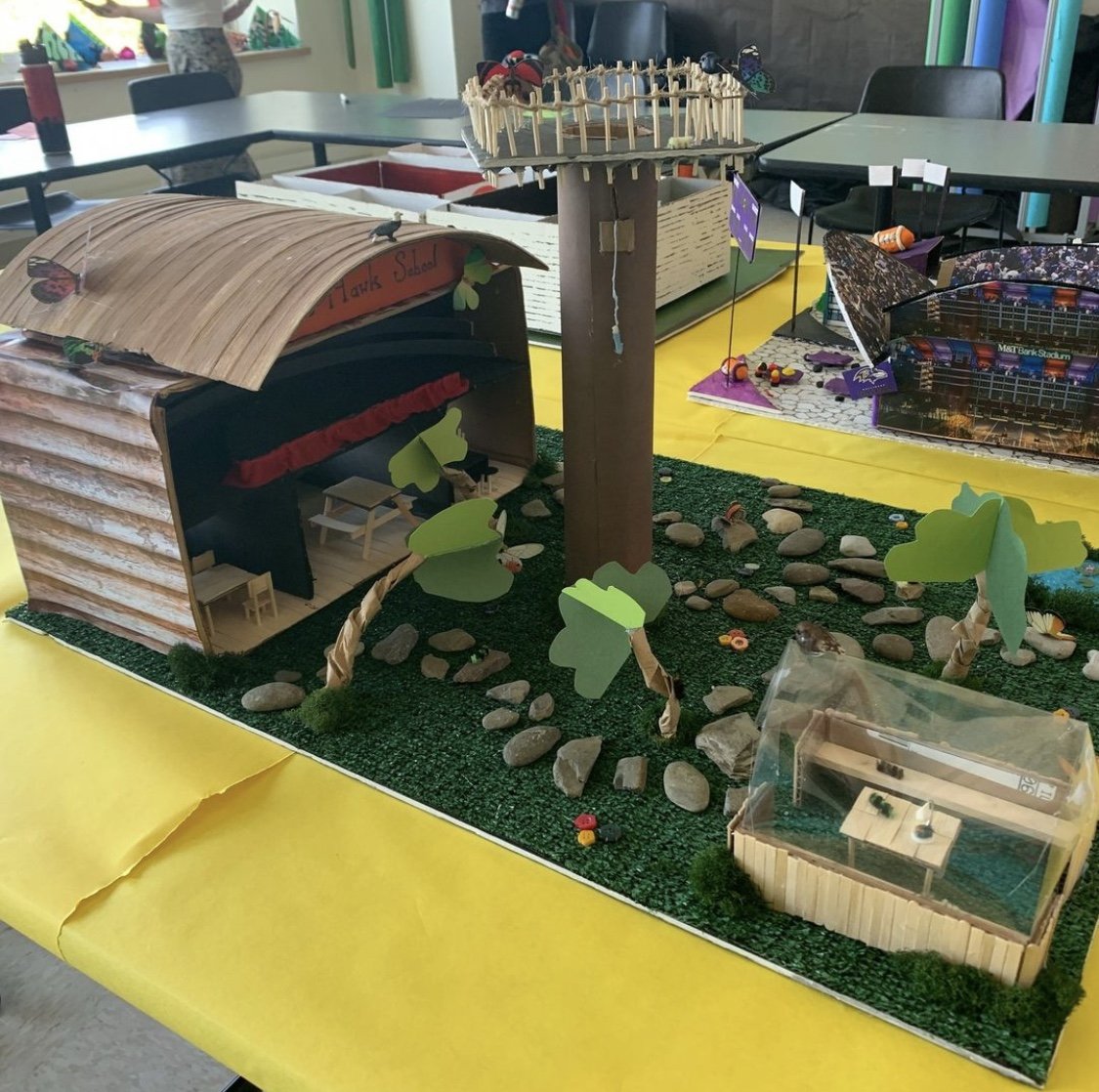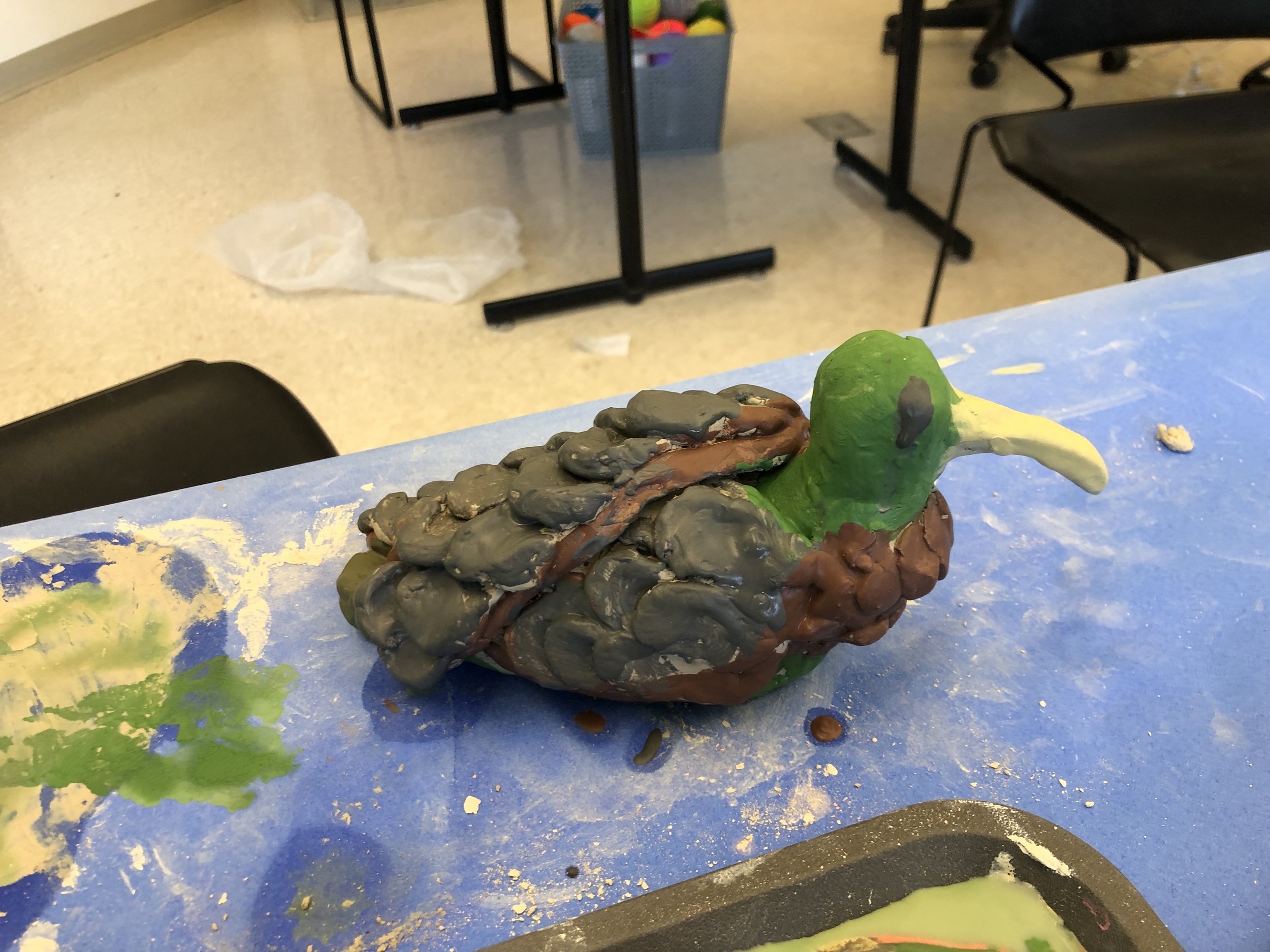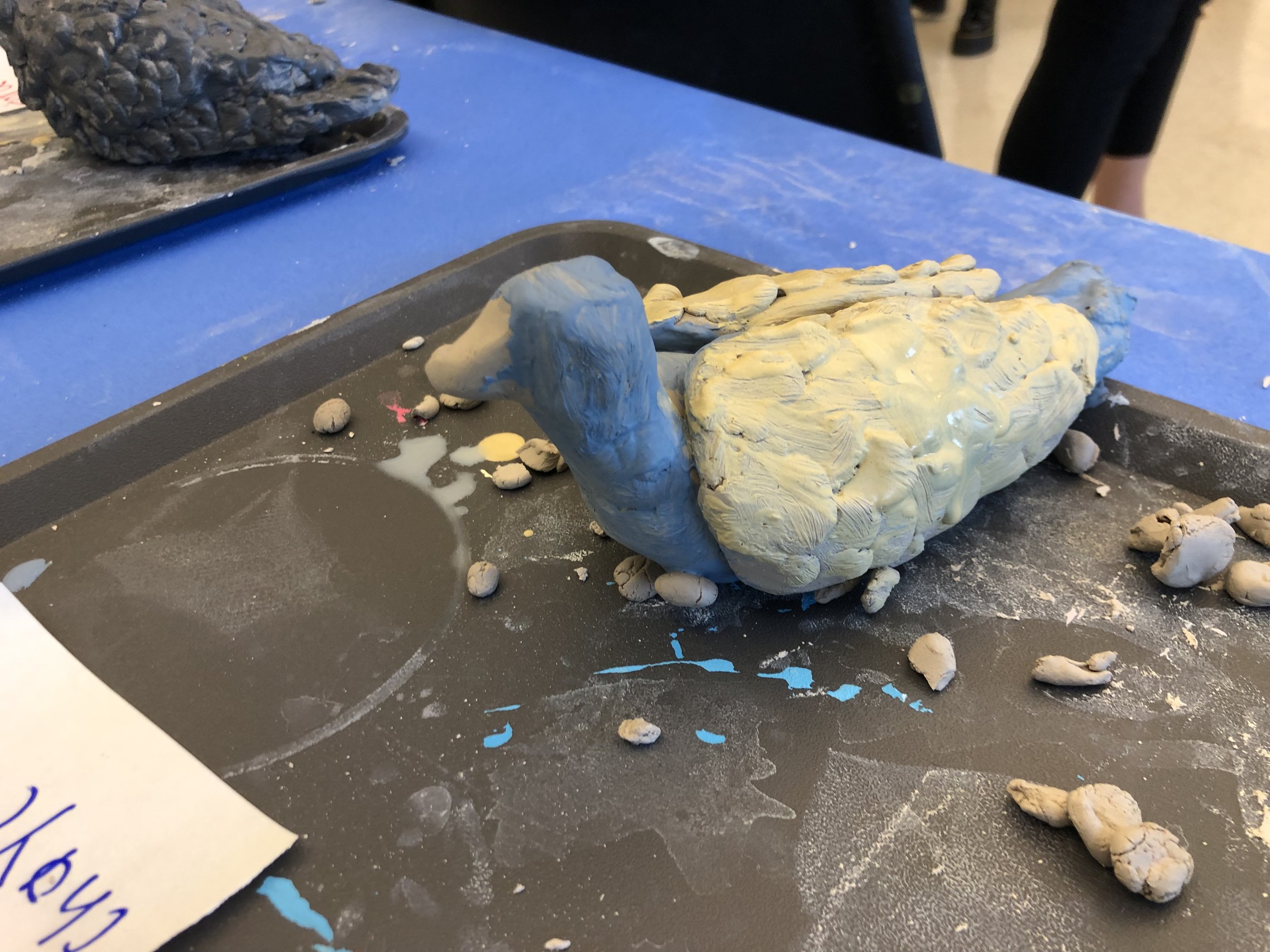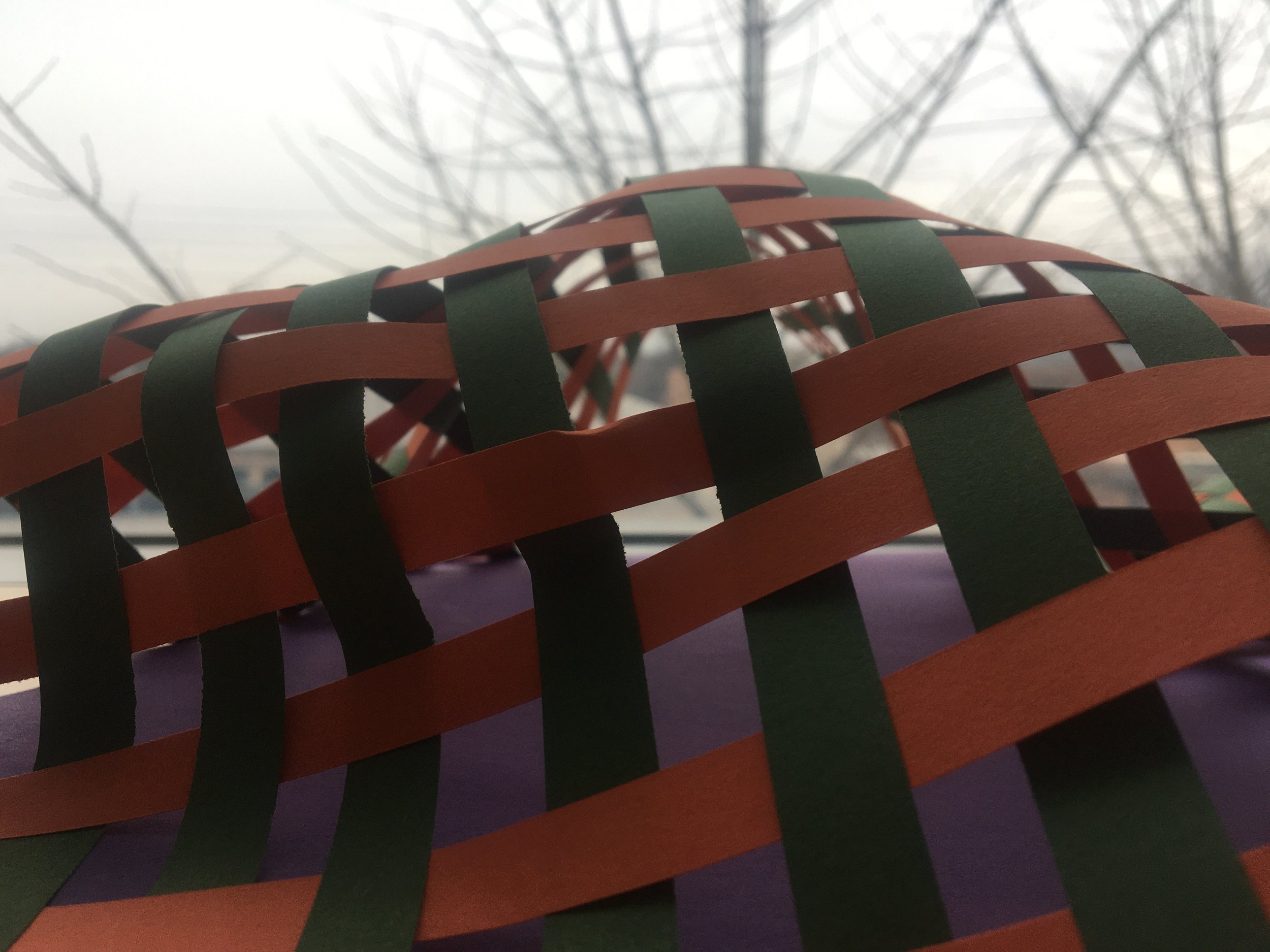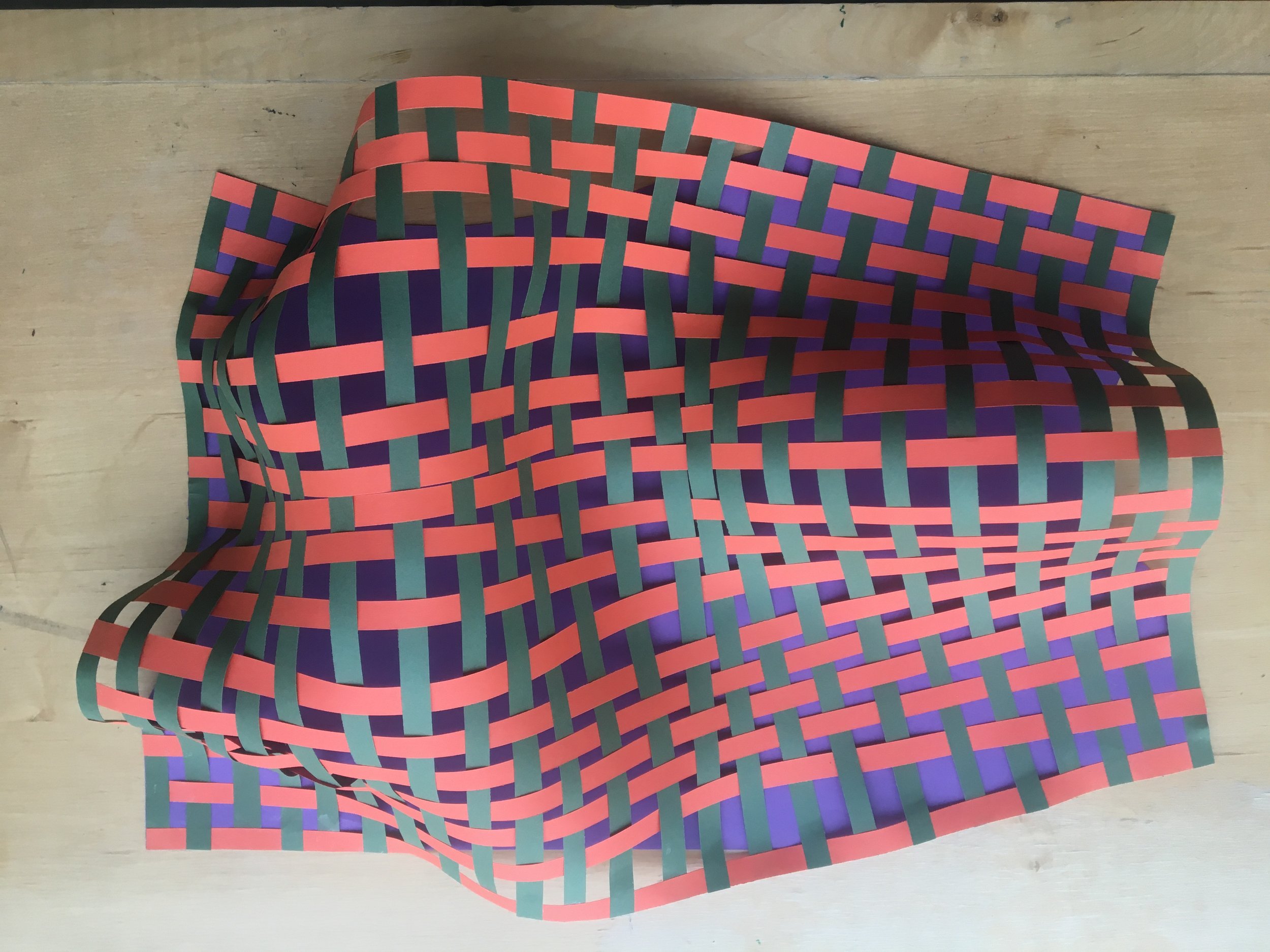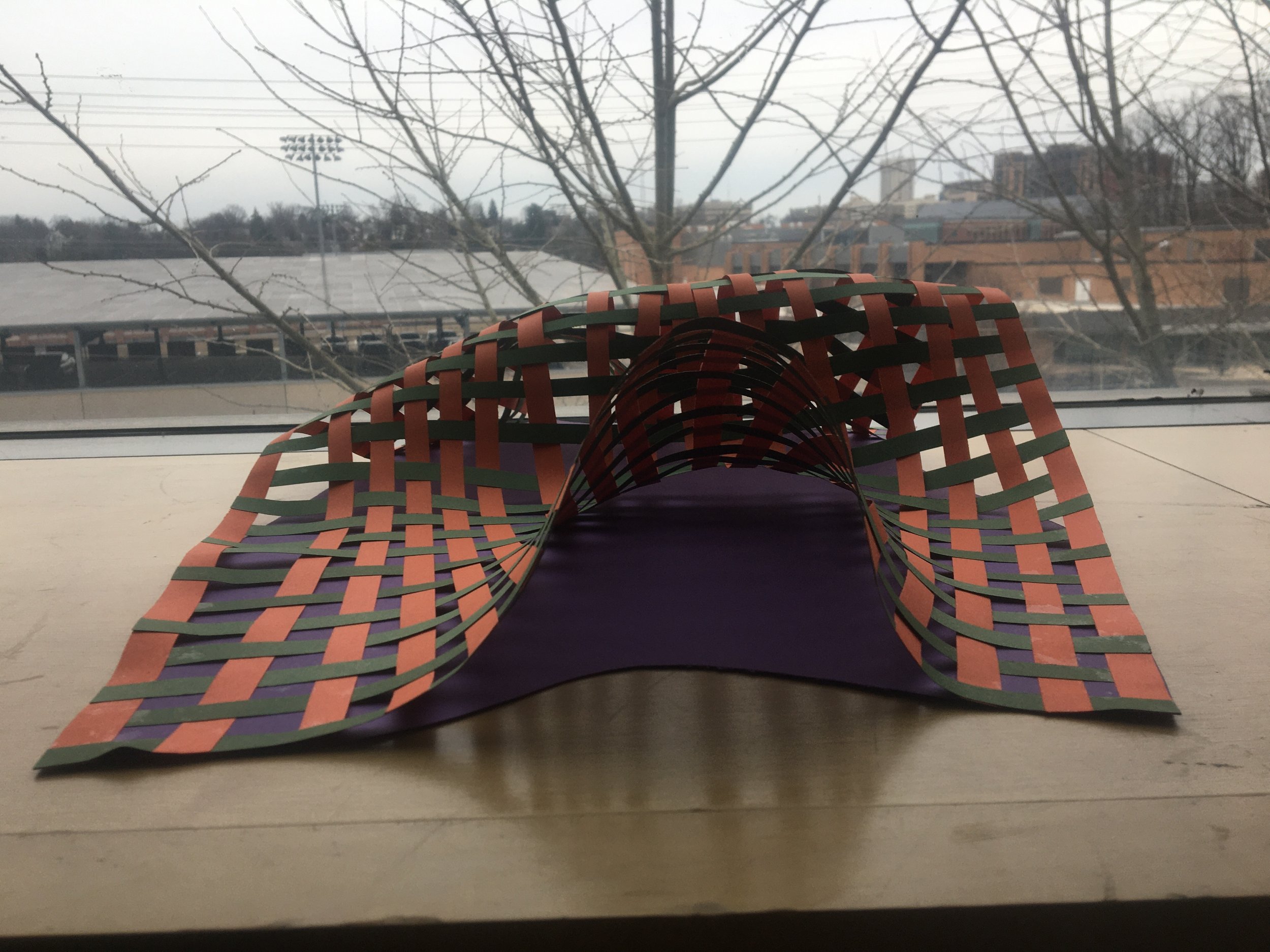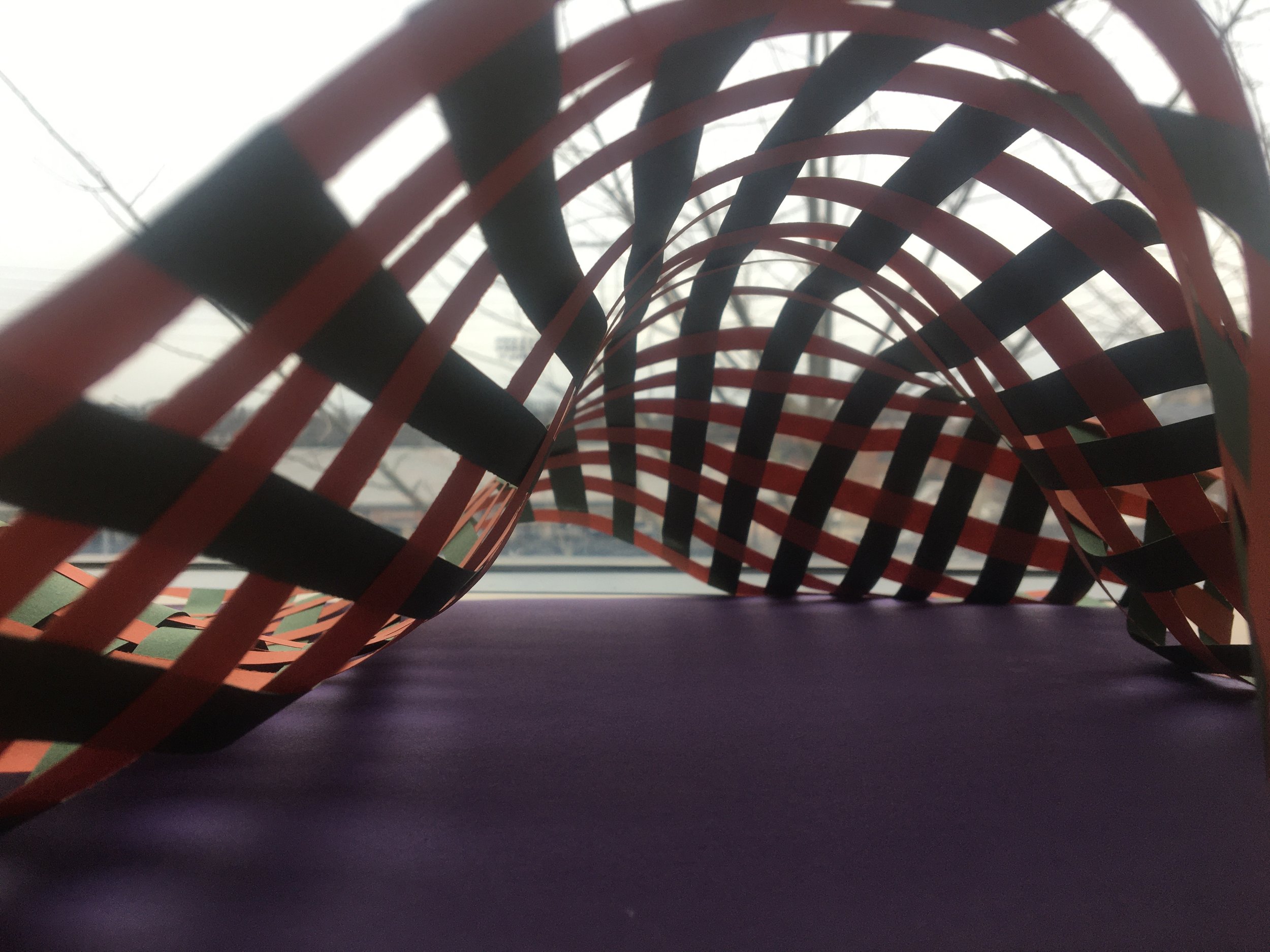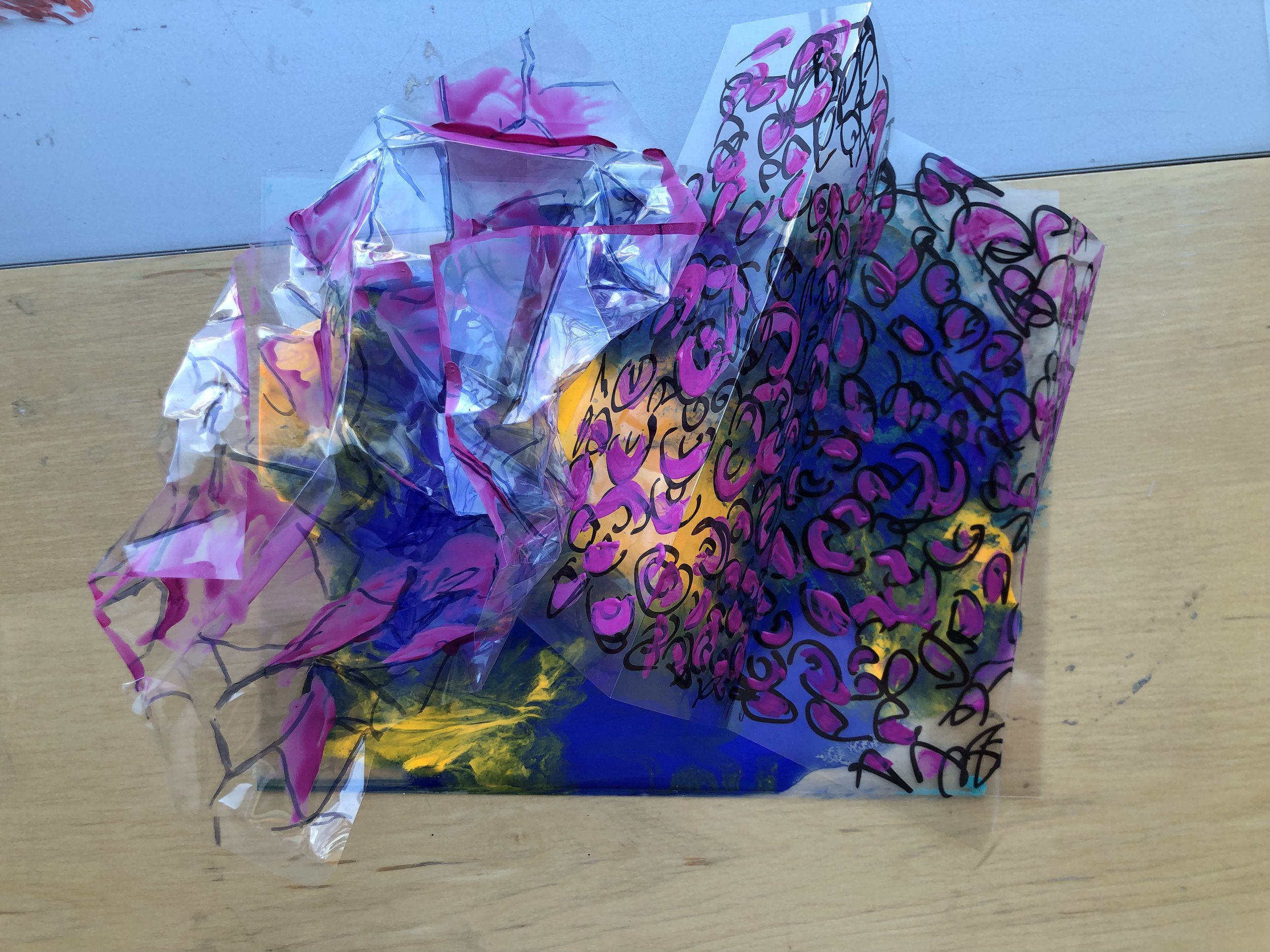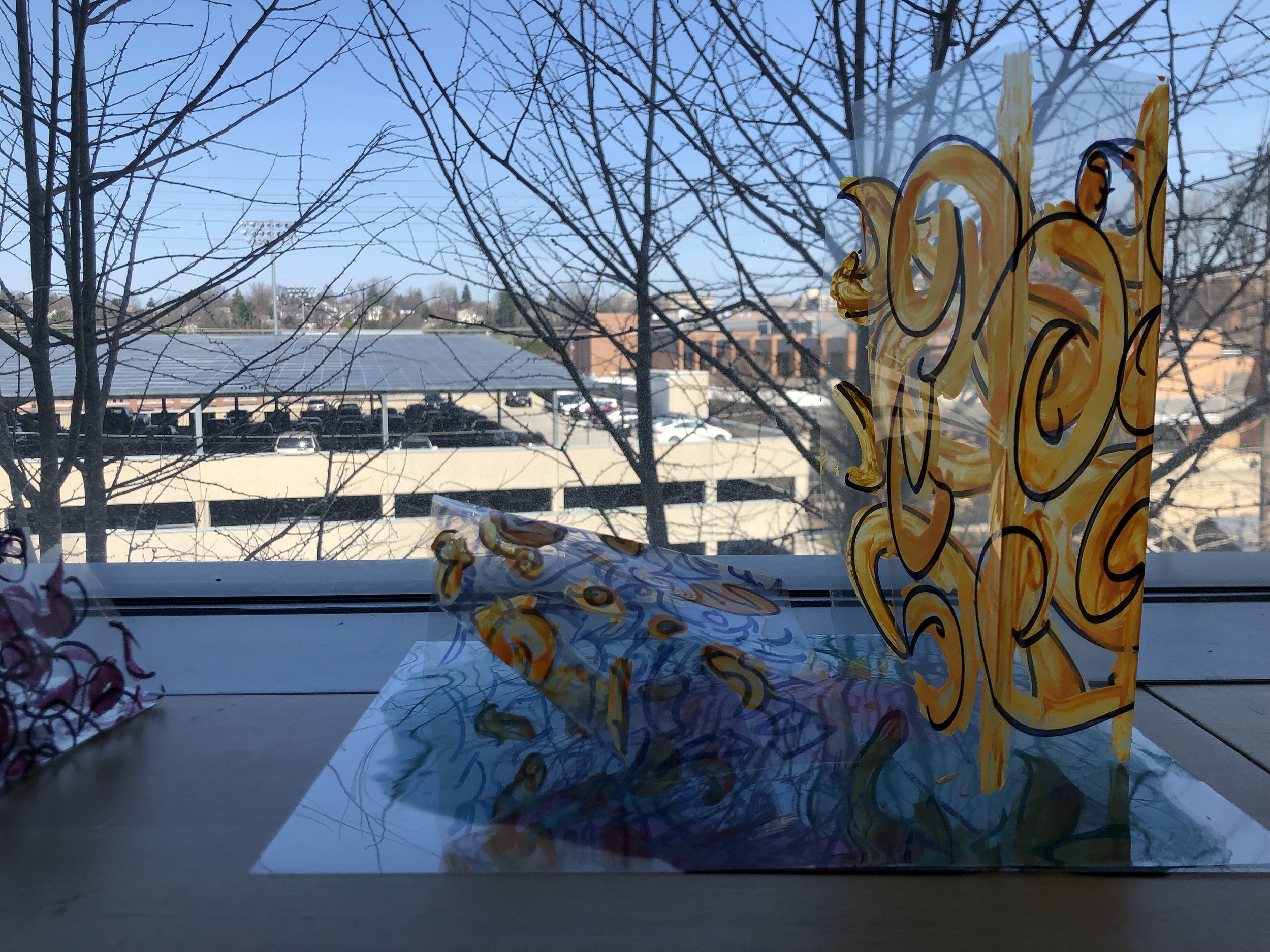Baltimore Clayworks
At Baltimore Clayworks, I conduct weekly classes in pottery wheel and hand-building techniques for teens ages 12 to 16.
These lessons include:
Throwing Lidded vessels
Throwing Plates and bowls
Shaping
Texture
Handle pulling
Coil Building
and Glazing technique
Dream School Project
For this project, we chose from a selection of student ideas for their dream schools. Students created plans for these schools based on what they would like to see in their community and the content they would like to learn in a school. For Marcus’ school, he wanted something akin to a nature reserve where students would be immersed in studying wildlife.
My project partner and I created students' dream schools based on their drawings and descriptions. We used wood strips, rocks, construction paper, foamboard, wooden skewers, transfer film, twine, yarn, artificial grass, faux moss, and hot glue to create paved pathways, trees a greenhouse/lab, a bird-watching tower with a functioning elevator, and a school building equipped with a cafeteria classrooms/labs, and an auditorium. This was then presented to the student upon its completion.
Marcus’ Description
What is important to teach? To learn at my school-at my school we will be learning about different types of birds and insects-What are the goals of your school”-To be a expert about birds and insects-Consider the , location, space ,place, resources ,materials, time, and people who will be involved with your school-i would be involved with William Paca and THSCT.
What is important to learn at my school will be learning about birds and insects. We learn where and how the birds live and what culture they come from. We will learn what they eat and when they were first spotted
What are the goals of your school? The main goal is to be an expert about birds and insects. Students will learn more about birds and insects because one day they might want to be a bird watcher. Or a lab person that studies birds. Or a person who wants to take pictures of birds and show them to someone you know close. We will need bird food, school supplies, laptops, camera, and other bird stuff.
Consider the setting, location, space, place, resources, materials, time, and people who will be involved with your school. My location would be outside where you could see the birds fly by and sometimes you can feed the birds. Mainly we will be outside learning about birds but if it rains we have the building for that.
New Song Workshop Example
This workshop introduced students to the field of ornithology through ceramics. We discussed the field of ornithology as it relates to taxonomy, evolution, anatomy, ecology, conservation, and wildlife management of birds. We then created birds based on the anatomy of those found in the eastern region of North America. A step-by-step guide was given on how to construct birds out of clay and students were able to refrence existing birds completely or develop their birds based on their own desired features
Paper Cutting Project
Paper Cutting Project
A weave made of paper would be a good project for students to complete individually and collaboratively. Students should be able to plan out what colors they want to use and patterns to create after studying weaving and textiles from a culture of their choice. It also allows them to explore different dimensions and scales in their work. The paper-cutting aspect has the potential to be developed further when examining the application of weaves in forms that are sculptural or more utilitarian.
Trancperancy/Layering Project
For this lesson on layering, I would incorporate artificial and/ or natural light. I want students to think about how light interacts with different materials in two and three-dimensional forms. These sculptures would be an approachable way to execute the lesson because they are modular. Allowing students to edit the structures and experiment with how light bends through their forms at different angles further enforces their understanding of layering and composition.



